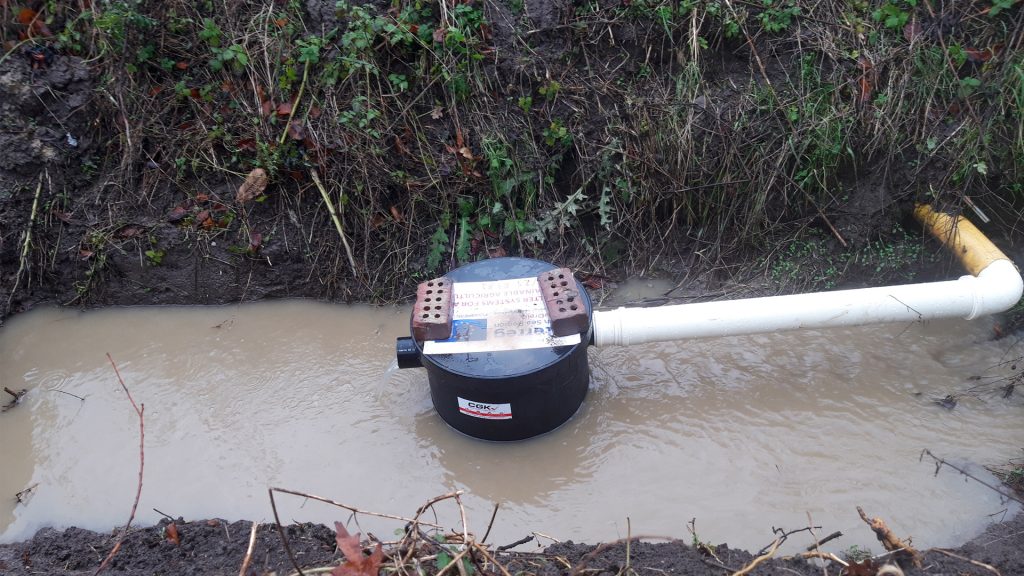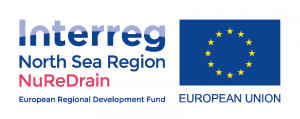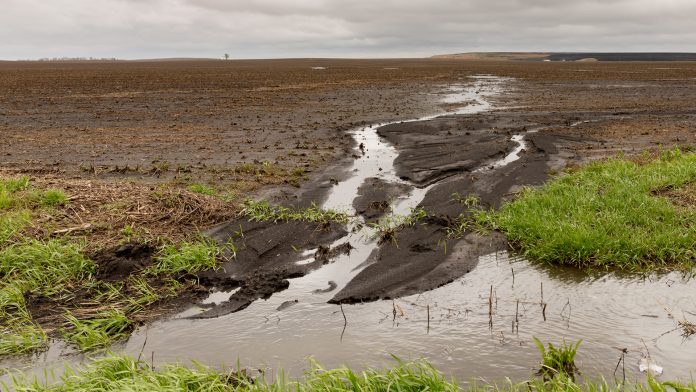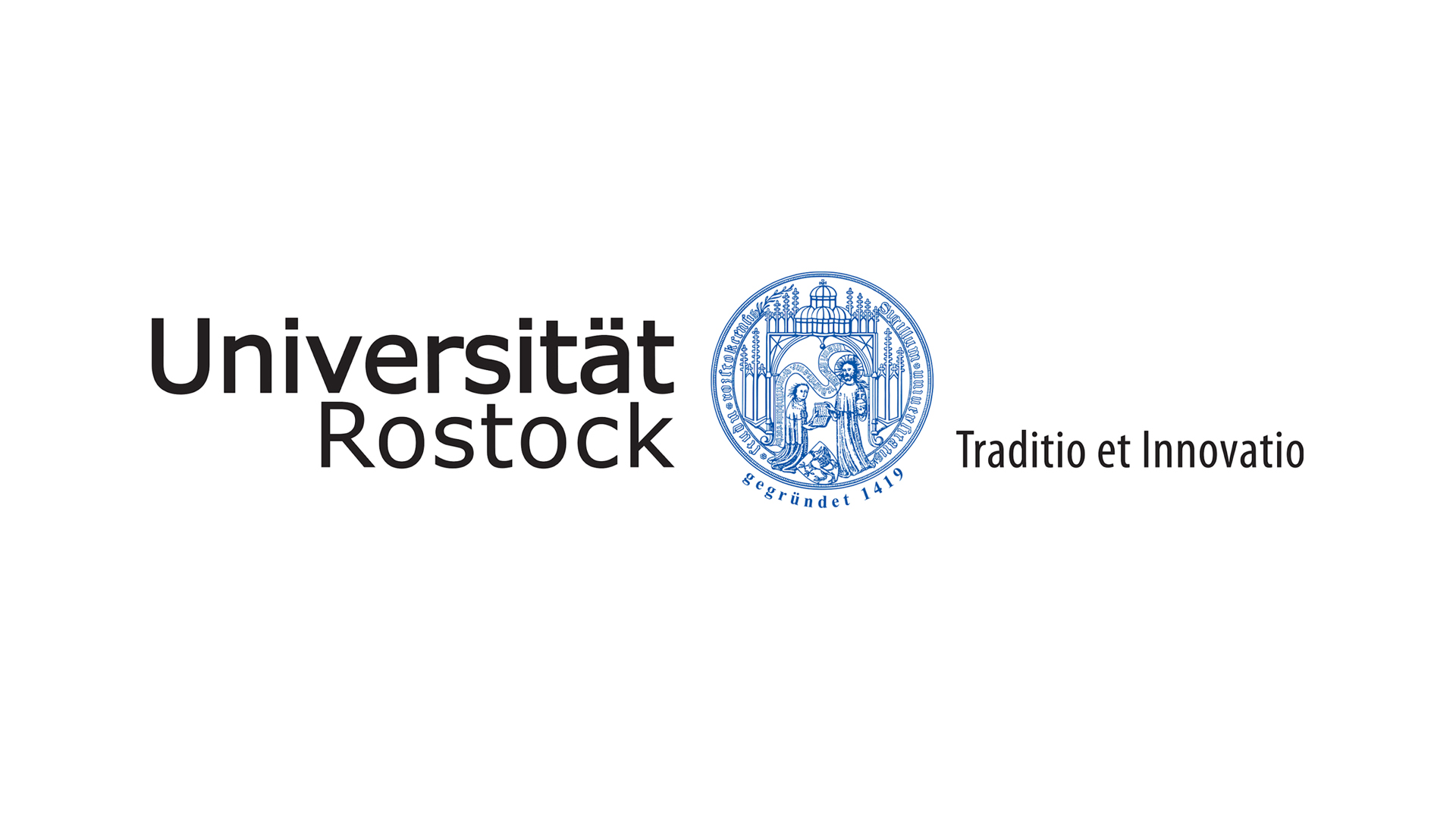The NuReDrain project discuss their work developing innovative technologies for removing the nutrients from agricultural runoff.
The North Sea region is recognised as an intensive farming area. Nutrient inputs from land have resulted in eutrophication of rivers, lakes, estuaries, and coastal zones. Current rules and regulations and the resulting ‘good practice’ of farmland management are considered insufficient to reduce nutrient losses down to environmental threshold values in the foreseeable future. The EU-funded project NuReDrain tested technologies for trapping phosphorus and nitrogen in agricultural affected water courses such as tile drainage discharge and greenhouse effluents.
The water regime overrides land management practice
Ground and surface water quality is closely linked to land management and agricultural activity. It is now common knowledge that the fertilisation of agricultural fields may lead to the contamination of water resources with nutrients such as nitrogen and phosphorus.
Long-term investigations and the analysis of nutrient budgets have shown that conventional crop production under current law leads to a positive nitrogen balance, i.e. nitrogen (N) surplus. The nitrogen balance is the difference between the nitrogen mass that is applied to the soil surface with organic and inorganic fertilisers and the amount of nitrogen that is exported from the field via the crop. The nitrogen surplus was as high as a 100 kg N ha-1 a-1 for decades but has been regulated down to 60 kg N ha-1 a-1, for instance, in Germany. The nitrogen surplus remains in the soil, is in part denitrified (converted to nitrogen gas), incorporated into the soil organic matter and is partially leached down to the groundwater. We intuitively assume that a high nitrogen surplus leads inevitably to high concentrations and loads in ground and surface waters. Such a relation can, however, not be proven from annual data sets. We could not find any relations between the nitrogen balance and the nitrogen export rates via the tile drainage path. Instead, the yearly water regime and the annual discharge volume were the only parameters that could be identified as significant drivers for the leached nitrogen fraction (Bauwe et al., 2020 – currently under review). However, it has been clearly shown that a drastic reduction in fertilisation has the potential to improve surface and groundwater quality but it may take decades to reach acceptable levels (Van Meter et al., 2018).
Artificial drainage can also be one of the main P sources in tile-drained areas. Due to short travel times, agricultural fields equipped with artificial drainage systems are particularly at risk for P leaching. Increased P concentrations in drainage water are being often observed after runoff events. P concentrations in surface waters are influenced by the P supply of soil, the proportion of agricultural land or by the type of tillage. Good agricultural practice and land-based measures such as the reduction of P surpluses, optimum fertiliser management and the creation of riparian buffer strips have not sufficiently reduced the P load in surface water bodies to an ecologically acceptable level in many catchments of the North Sea region.
So, there is nothing to be done about it? Not quite. In addition to a revised land management and a limited application of fertilisers to soils, so-called ‘water-based’ or ‘end-of-pipe’ solutions have come into focus for water quality improvements. The idea behind several newly developed techniques is to clean up contaminated water before it reaches rivers and eventually the ocean. This is, of course, only an option for landscape settings where agricultural runoff can be captured and treated. In this context, agricultural tile drainage systems, in which the soil access water is routed to ditches and brooks, offer excellent opportunities for water treatment.
Lowland catchments dominate the North Sea region. The low-lying land is characterised by a high groundwater table impeding agricultural soil treatment. Soil treatment using heavy machinery becomes challenging in early spring. Therefore, subsoil drainage systems have been installed to lower the groundwater table and to allow mechanical soil treatment. Tile drainage systems are widespread, and the tile drainage discharge has been identified as the major pathway for nutrients from agricultural land to water bodies in several river basins of the North Sea region.
Nitrogen removal from tile drainage water
End-of-pipe N removal was tested in the NuReDrain project by means of a Moving Bed Biofilm Reactor (MBBR). The reactor contains plastic carriers onto which a biofilm grows performing biological denitrification. Carriers are in motion by interval aeration while the reactor is mainly anoxic for the remaining time. Bacteria are fed with the carbon source Carbo-ST to guarantee a smooth conversion of nitrate to nitrogen gas. Van Aken et al. (2020) have put the MBBR in the field at several locations in Belgium over several years. Some locations were close to the grid, other locations were remote, so electricity had to be provided by solar panels. Wherever possible, the MBBR was installed in the subsoil to keep temperatures always above 5 °C. The average removal efficiency was about 65%. The experiments revealed that the removal efficiency was largely influenced by flow and initial N concentrations.
Another filter technology is the zero valent iron (ZVI) filter, developed in Denmark by Florea & Hansen (2018). Through this filter, nitrate in drainage water is reduced to ammonium by metallic iron, and the ammonium produced is retained on a zeolite cation exchanger. With this filter concept, beside the removal of nitrate, ammonium could be reused as fertiliser. The pilot units comprised a ZVI column packed with 45 kg of ZVI, a bubbler unit which transforms soluble iron (II) to iron oxides and a column packed with 65 kg of zeolite to retain ammonium. The inlet drainage water coming from a tile drain contained on average 5.25 mg NO3-N/L and was pumped at a flow rate of 1 L/min. Results from the first 50 days of operation, in which approximately 45 m3 of water has been treated, showed that the filtered water was free of nitrate and soluble iron. All the nitrate was converted into ammonium.
Phosphorus removal from tile drainage water
End-of-pipe P removal in the NuReDrain project is based on the adsorption of P on iron rich material. The latter is a common by-product of the drinking water production: either as iron-coated sand (ICS) or as granulates from iron sludge. Vandermoere et al. (2018) designed a filter to be connected to single tile drains (Fig. 1). P rich drainage water flows from the bottom to the top of the filter, while P is being adsorbed on the ICS grains. P poor drainage water is discharged into the ditch. Filters have been installed at several locations in Belgium and were monitored over a three year period. P was mainly present as dissolved reactive P in the tile drainage water. The average P removal efficiency amounted up to 80%, being dependent on flow and the initial P concentration in the drainage water. A similar filter setup in horticulture resulted in a 95% P removal with ICS being saturated after two years of operation.

The idea of such P filters comprises the reuse of the P saturated ICS grains as fertiliser. Recent research indicated that P is strongly bound to the ICS and can, hence, not be directly taken up by plants. However, lab experiments have shown that 40% of the P can be released from the ICS by a chemical alkalic treatment (Lambert et al., 2020).
Another P filter also being tested employs engineered filter materials. The filter material consists of 2 – 4 mm diatomaceous earth granules coated with iron oxide. These granules are stable and highly porous, and hence have a high P sorption capacity while at the same time giving rise to a high hydraulic conductivity (Lu et al., 2020). If the tile drainage water contains high sediment loadings, a pre-filter should be installed to avoid clogging of the P-filter. The latter is being tested in a Danish filter system comprising both a particle filter (based on forced sedimentation) and a filter to retain soluble phosphate.
Outlook
The various techniques and substrates tested in the NuReDrain project to remove nutrients from agricultural runoff are promising and pave the way for instantaneous water quality improvements. End-of-pipe solutions may be established at a large scale as it is currently realised in Denmark but may be especially appropriate at hot spots of nutrient export via tile drainage water. The farming community is currently informed about the nutrient reduction options through the NuReDrain project; incentive schemes could help to widespread the new technologies and to improve surface and coastal water quality in the near future.
For details on the NuReDrain project see: https://northsearegion.eu/nuredrain/
References
Bauwe A, Kahle P, Tiemeyer B, Lennartz B (2020). Nitrogen export in tile- drained landscapes is linked to water balance rather than land management. Submitted to Environmental Research Letters (currently under review).
Florea A, Hansen HCB (2018). Phosphate retention, Nitrate removal and Nitrogen recovery from agricultural drainage water using a filter system based on Zero-valent iron and Zeolite. MSc thesis, 69 pp, University of Copenhagen.
Lambert N, Van Aken P, Dewil R (2020). Adsorption of phosphates onto Iron Coated Sand and a subsequent alkaline desorption as a recovery strategy in the horticulture sector. IWA World Water Congress & Exhibition, submitted.
Lu C, Heiberg L, Florea A, Hansen HCB (2020). Formation and phosphate retention by iron oxide coated diatomaceous earth filter, in preparation.
Van Aken P, Lambert N, Dewil R (2020). Low temperature Moving Bed Bioreactor denitrification as mitigation measure to reduce agricultural nitrate losses. IWA World Water Congress & Exhibition, submitted.
Vandermoere S, Ralaizafisoloarivony NA, Van Ranst E, De Neve S (2018). Reducing phosphorus (P) losses from drained agricultural fields with iron coated sand (- glauconite) filters. Water Research 141, 329-339.
Van Meter KJ, Van Cappellen P, Basu NB (2018). Legacy nitrogen may prevent achievement of water quality goals in the Gulf of Mexico. Science 360(6387), 427-430.








